Let’s make crispy Cheese Mandu with Mentaiko.
What is Mandu?
Korean Mandu is a dish made by kneading flour and other ingredients to form a thin wrapper, which is then filled with vegetables, meat, or other fillings. Originally part of royal court cuisine, Mandu is now commonly found in supermarkets, restaurants, snack bars, food trucks, and as street food.
Korean Mandu 만두
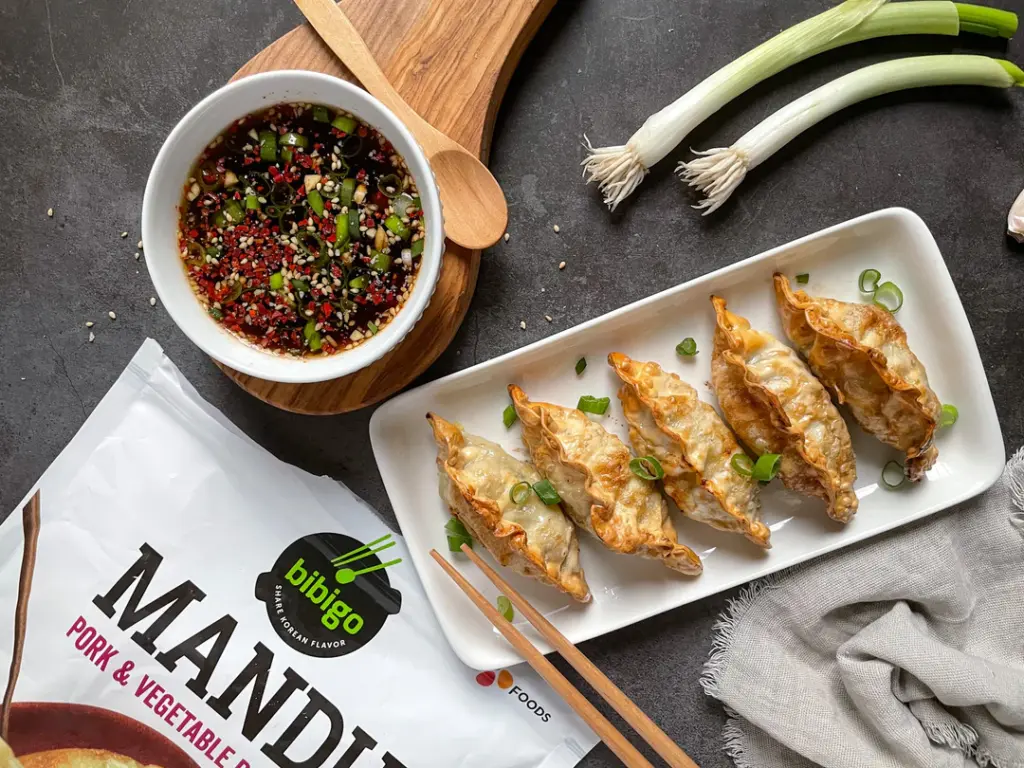
These days, it seems like Korean Mandu(dumpling) is trending all over the world. Korean Mandu feature thin, soft wrappers filled with fresh meat and vegetables, which seem to appeal to foreign palates. There are so many varieties, from Galbi Mandu to shrimp Mandu and veggie Mandu, including flavors that aren’t even available in Korea.
Korean Mandu, Japanese Gyoja, Chinese Dumplings
Korean Mandu
Mandu can be steamed, boiled, or pan-fried, with fillings ranging from pork, beef, vegetables, and kimchi to tofu. It also has a slightly larger, rounder shape. Mandu is often eaten with a dipping sauce of soy sauce and vinegar, or served in soups such as mandu guk (dumpling soup) or kimchi jjigae (kimchi stew).
Mandu can be served as a side dish, snack, or even a main dish, often in a variety of styles such as kimchi mandu or vegetable mandu.
Japanese Gyoza
Gyoza is the Japanese adaptation of Chinese dumplings, influenced by Chinese jiaozi but with a few key differences. The fillings often include minced pork, cabbage, garlic, and ginger, with an emphasis on a more delicate, finely chopped filling compared to Chinese dumplings. Gyoza are traditionally pan-fried (the yaki version), which gives them a crispy bottom, but they can also be steamed or boiled.
Chinese Dumplings
Chinese dumplings, or jiaozi, come in many varieties and are commonly boiled, steamed, or pan-fried.
Fillings often include minced pork, shrimp, chicken, or vegetables, and they are often seasoned with ginger, garlic, and soy sauce. Jiaozi are usually served with a soy-based dipping sauce and are often eaten during the Chinese New Year to symbolize wealth and prosperity.
Types of Dumplings
Mandu(dumpling) is categorized based on their filling, such as vegetable mandu, meat mandu, and kimchi mandu. They can also be distinguished by their cooking method, such as pan-fried mandu(gun mandu 군만두), steamed mandu(jjin mandu 찐만두), and boiled dumplings(mul mandu 물만두). The mandu most popular in Europe and the U.S. are typically the pan-fried variety. My Belgian friends often request Mandu(만두) when they come over to my house. Crispy pan-fried Mandu, with their crunchy exterior and moist filling, are always a hit.
Just ten years ago, when you went to the frozen section of Asian markets, you could only find Japanese gyoza and no Korean Mandu, but now I can find Bibigo Korean Mandu at the Asian market here in Belgium. I still remember how thrilled I was when I first discovered Bibigo Mandu in Belgium!
Mandu is like soul food for Koreans. We eat Mandu as a simple snack or lunch, and there are various dishes like Mandu soup and Mandu stew that use them.
There are even different cooking methods, which lead to pan-fried, steamed, boiled, or deep-fried Mandu. The charm of Mandu lies in their ability to offer different flavors depending on the ingredients and cooking methods.
What foods go well with mandu?
Mandus are usually eaten with noodles(guksu 국수) or other types of Korean fast food(Bunsik 분식). They are often paired with kalguksu (knife-cut noodles), bibim guksu (spicy mixed noodles), or naengmyeon (cold noodles), typically with steamed mandu. The combination of noodles and mandu is a real treat, as the mandu provides the protein that’s hard to find in the noodles themselves.
This is a really easy-to-make but classic soy sauce bibim guksu (mixed noodles). I highly recommend pairing it with mandu for the perfect combination!
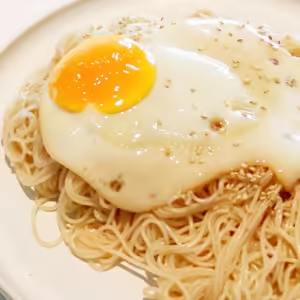
In Korean fast food, mandu is usually served as fried gunmandu. It’s especially delicious when dipped in the spicy sauce of tteokbokki (spicy rice cakes). Just the thought of dipping the crispy mandu into the sauce makes your mouth water!
Mentaiko Cheese Mandu
Today, I’m excited to share a special take on Korean Mandu inspired by Japanese izakaya—mentaiko cheese Mandu.
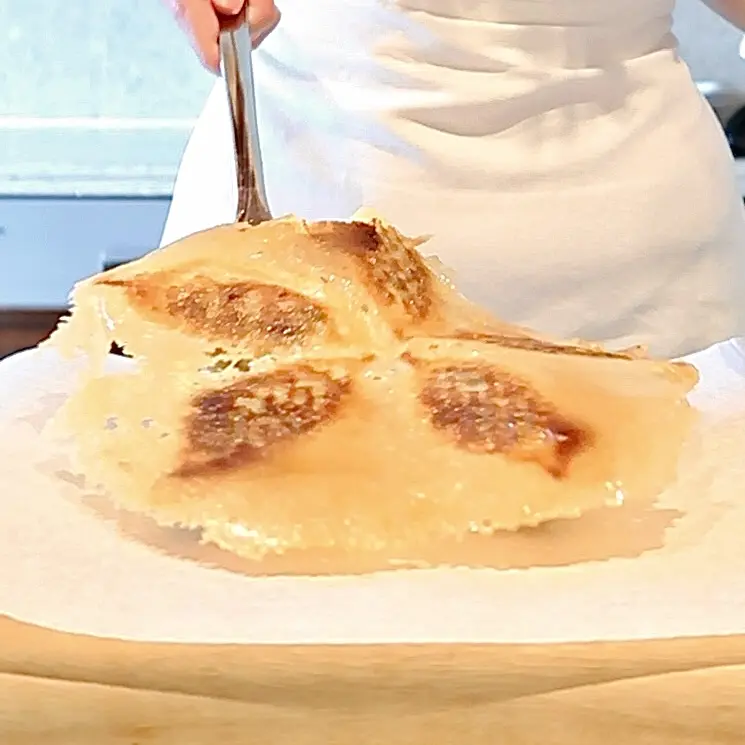
How about enjoying this stunning Mandu dish that combines crispy pan-fried Mandu topped with mozzarella cheese and mentaiko for both flavor and presentation?
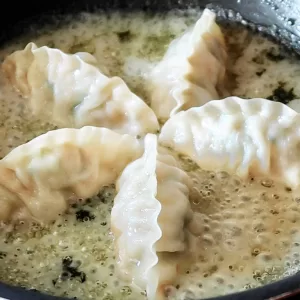
Mentaiko Cheese Mandu
Equipment
- 1 Fry Pan
- 1 Tongs
- 1 Pan lid
- 1 Airfryer You can use a microwave or an oven as well.
- 1 Tbsp
- 1 tsp
Ingredients
- 5 Pieces Frozen Korean Mandu (if you use more mandu, it will be more beautiful like a flower)
- 25 g Cooking oil (for frying)
- 1 Tbsp Flour
- 150 ml Water
- 1 Pinch Salt
- 40 g Mozzarella cheese
- 1 Piece Mentaiko (polloch roe) (optional)
- 1 tsp Sesame oil (if using mentaiko)
Instructions
Pan-fry the Mandu
- Place the Korean frozen Mandu in a pan.
- Generously add cooking oil.
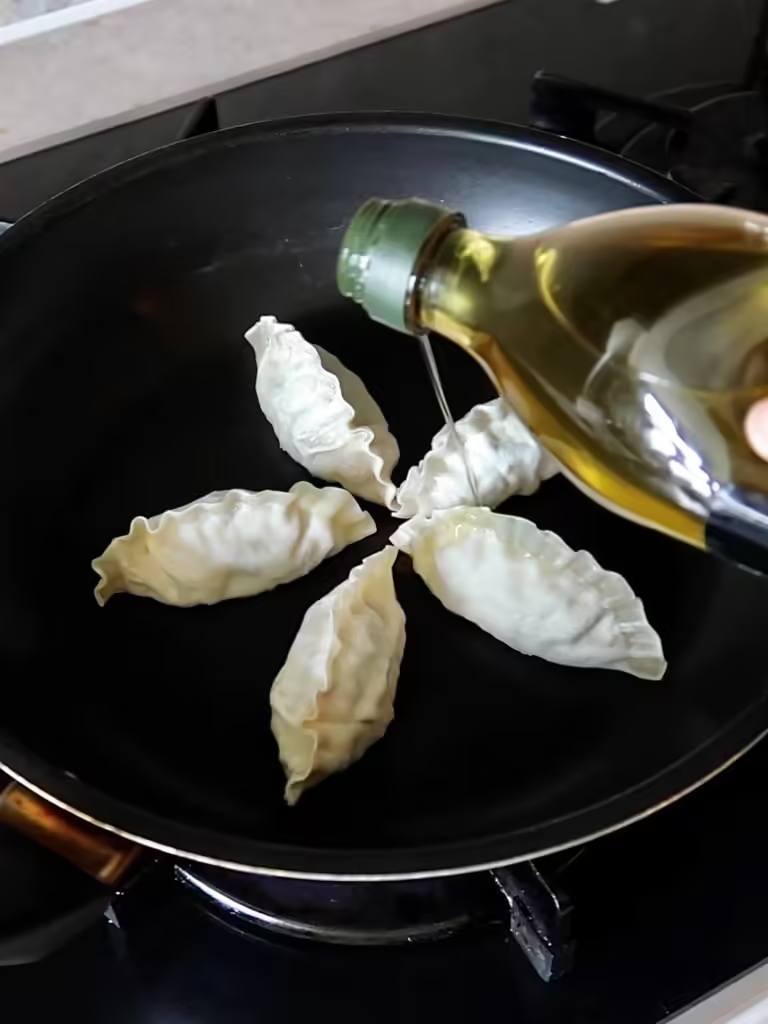
- Cover with a lid and cook for 3 minutes.
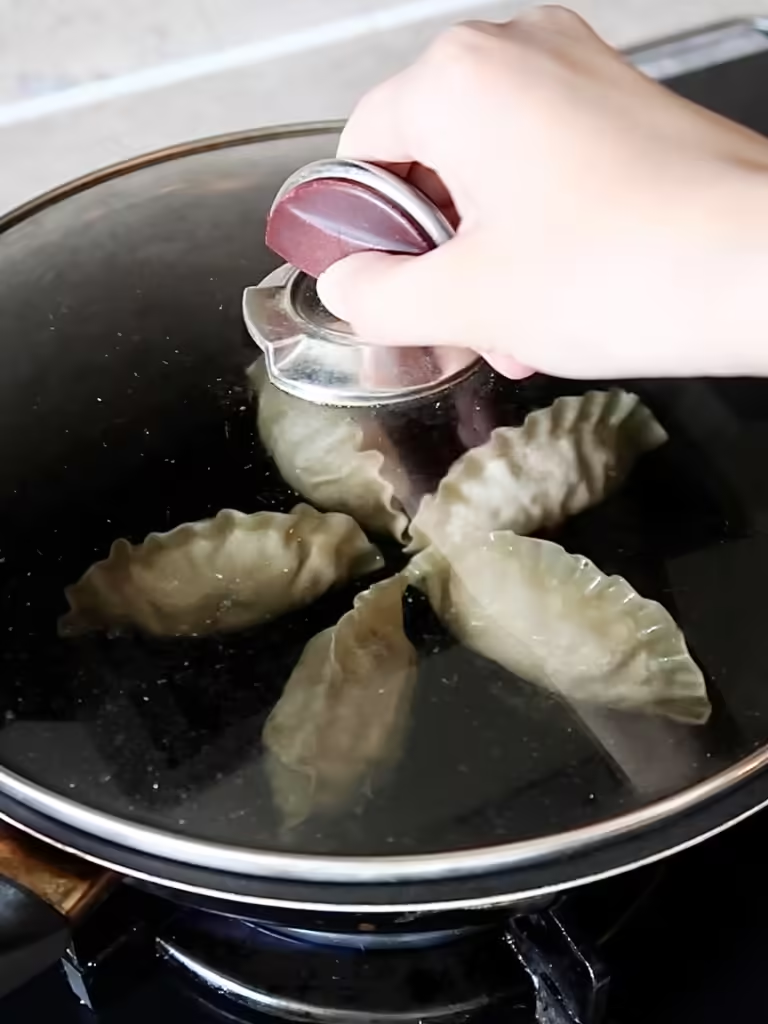
Flour water mixture
- The flour-water mixture:– 1 tablespoon of flour.– 150 ml of water.– a pinch of salt.
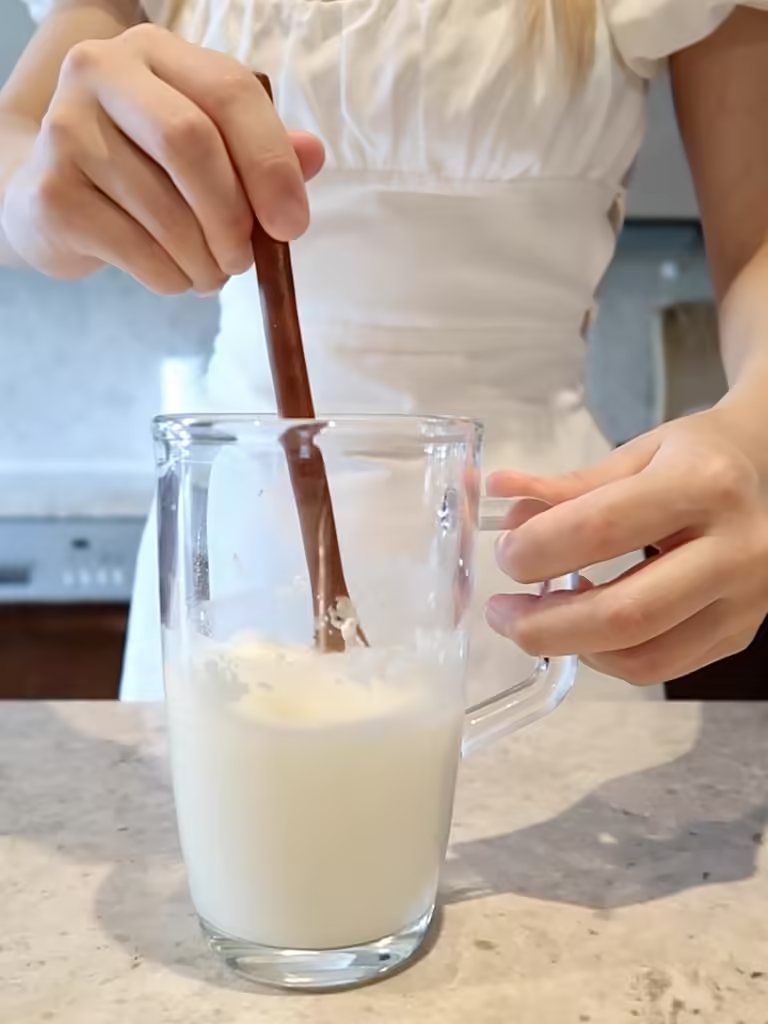
- Once the top of the Mandu becomes translucent, pour in the flour-water mixture and cover again to cook.
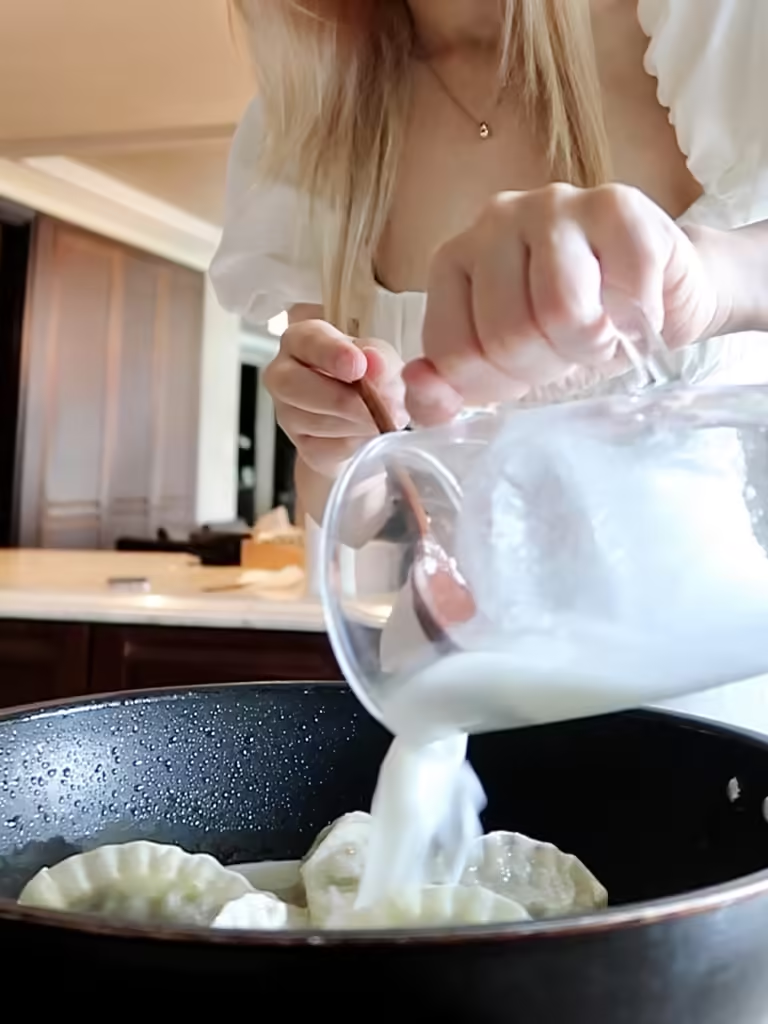
- When the water starts to evaporate, remove the lid.
- Reduce to low heat to let the moisture evaporate completely.
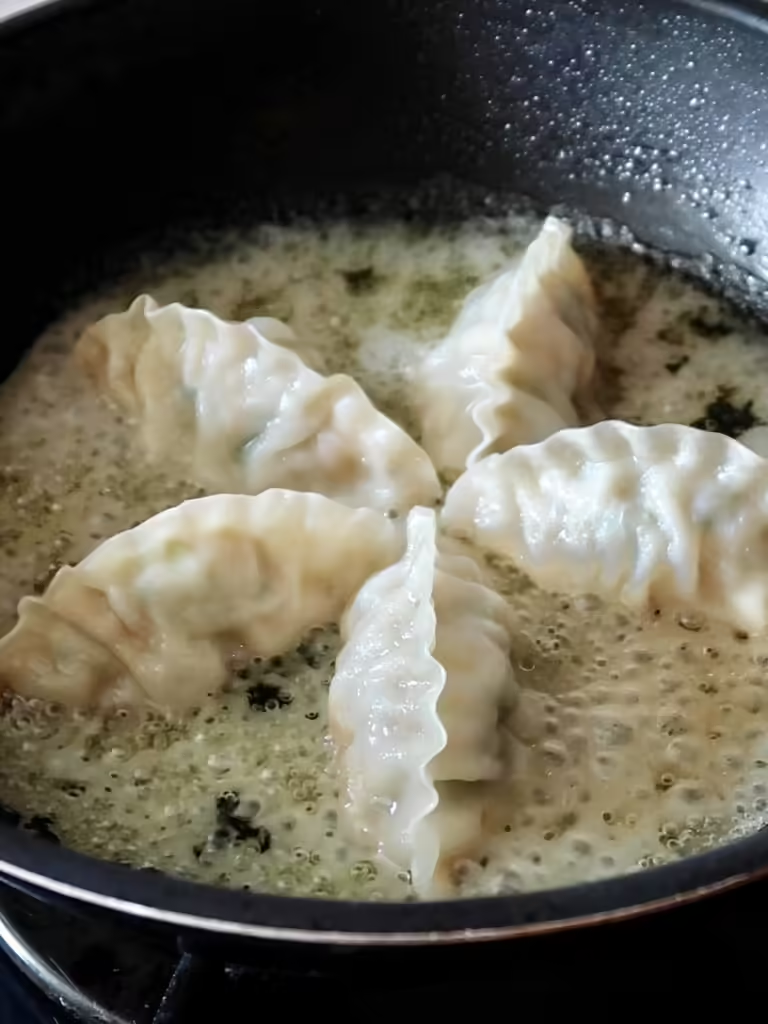
Topping
- Once all the moisture is gone, transfer the Mandu to a plate.
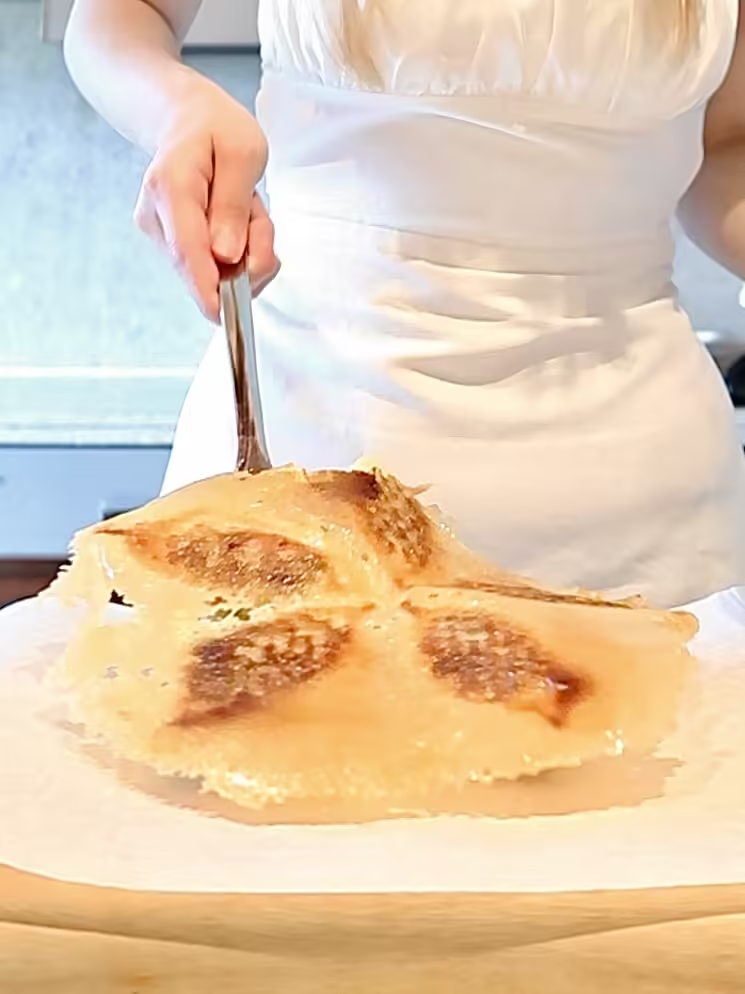
- Top the Mandu with mozzarella cheese.
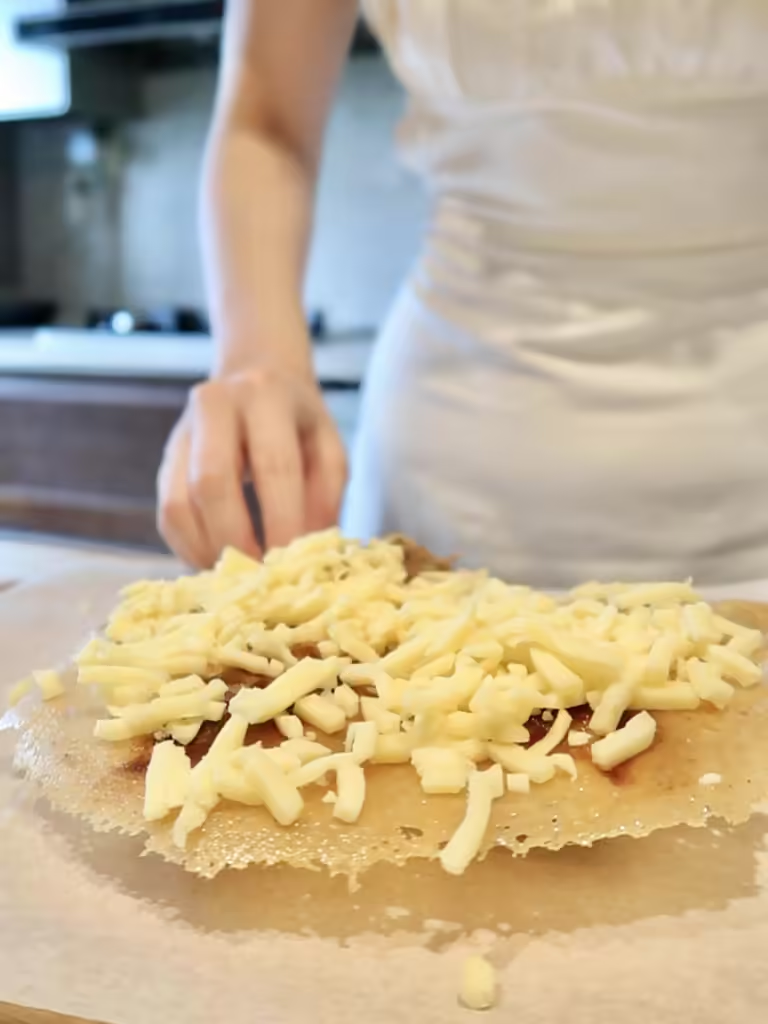
- Air fry at 180°C (356°F) for 3 minutes to melt the cheese.– You can use a microwave or an oven, but I recommend using an air fryer to keep the Mandu crispy.
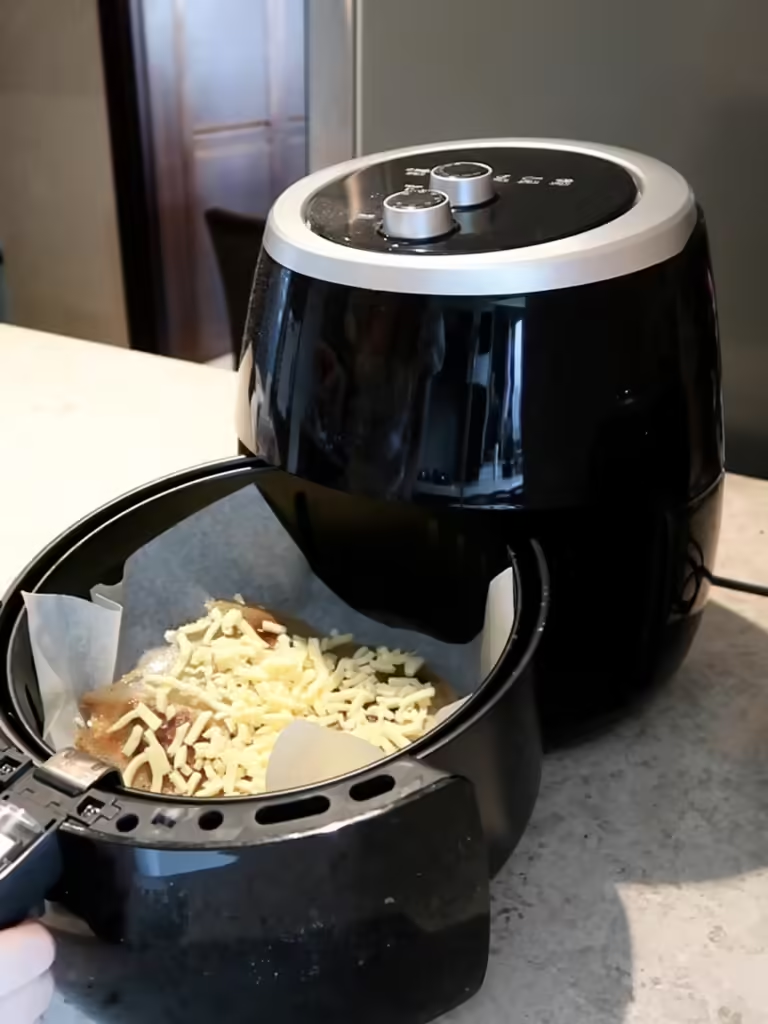
- Optional:If you have mentaiko (pollock roe), it makes the Mandu extra special!
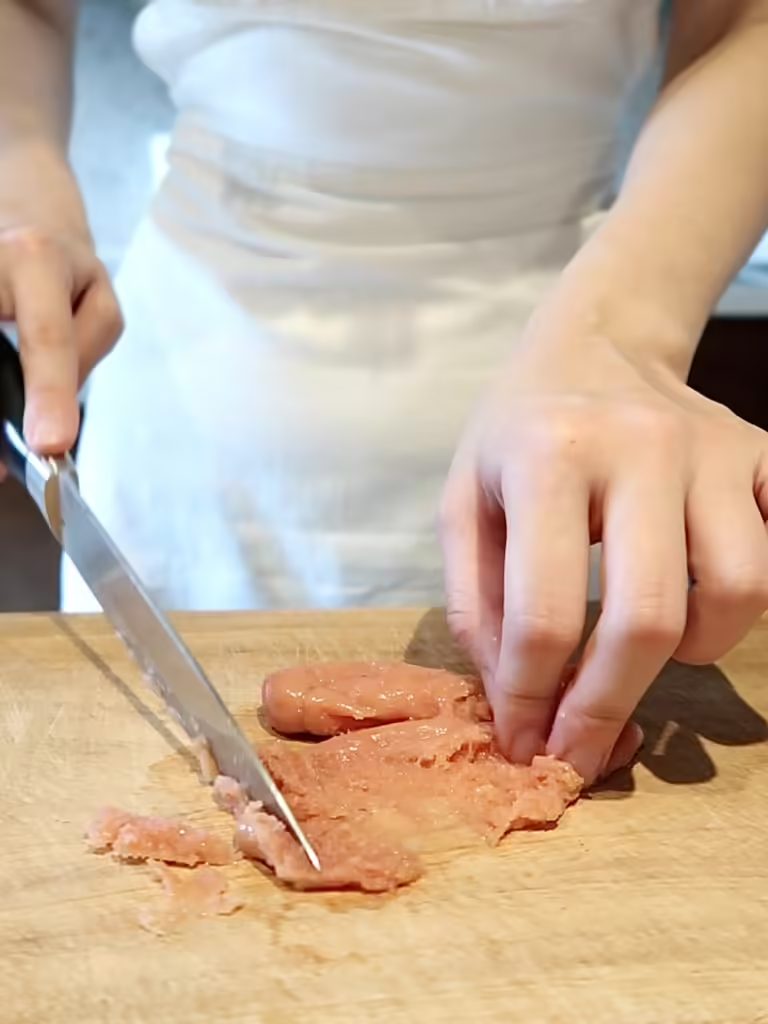
- Scoop out the roe and mix it with 1 tablespoon of sesame oil
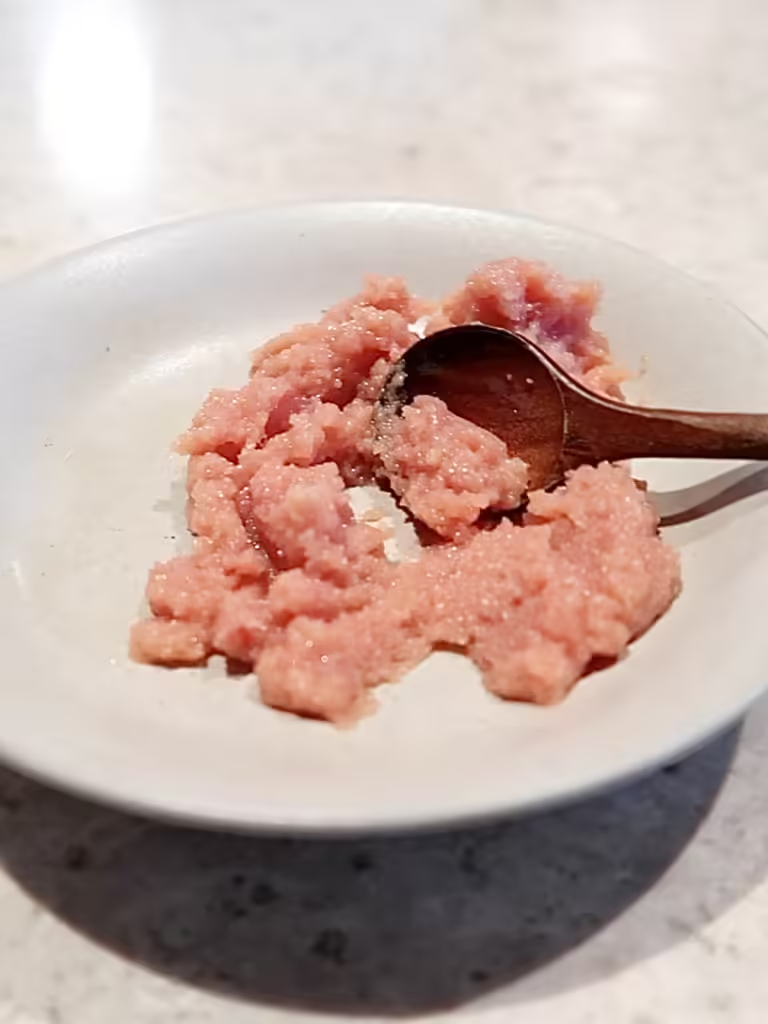
- Then place the mentaiko mixture on top of the cheese dumplings.
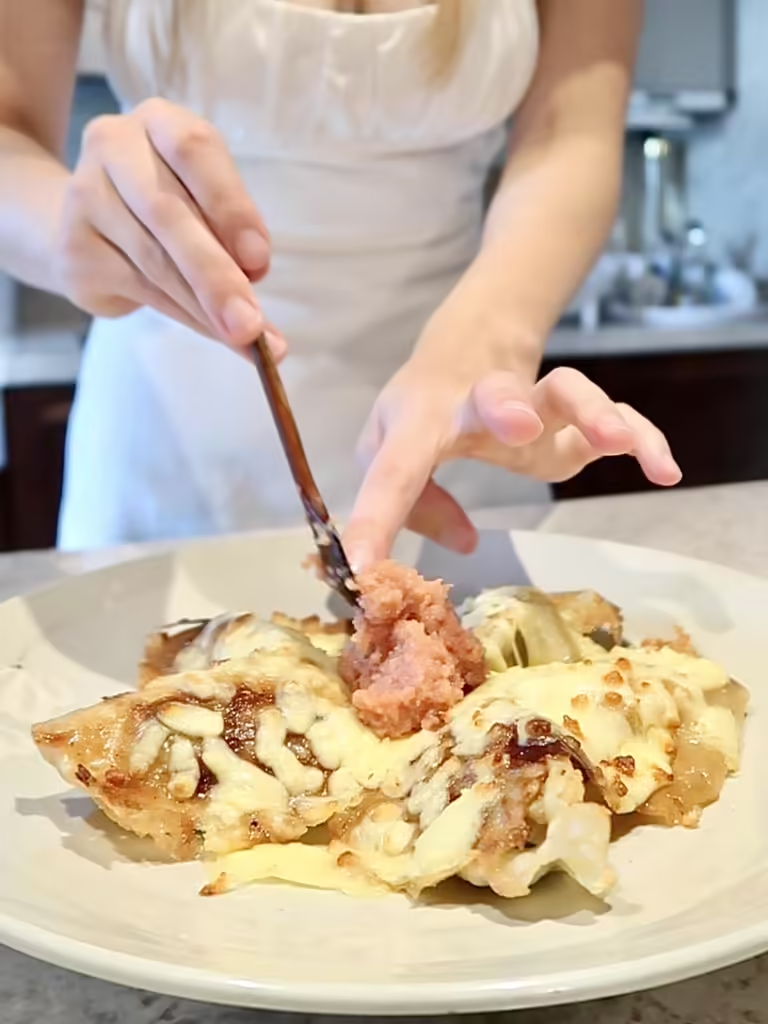
Jal meokgetseumnida.
잘 먹겠습니다.
Did you make this recipe?
Please let me know how it turned out for you! Leave a comment below and tag @blondekimchi_ on Instagram and hashtag it #blondekimchi.
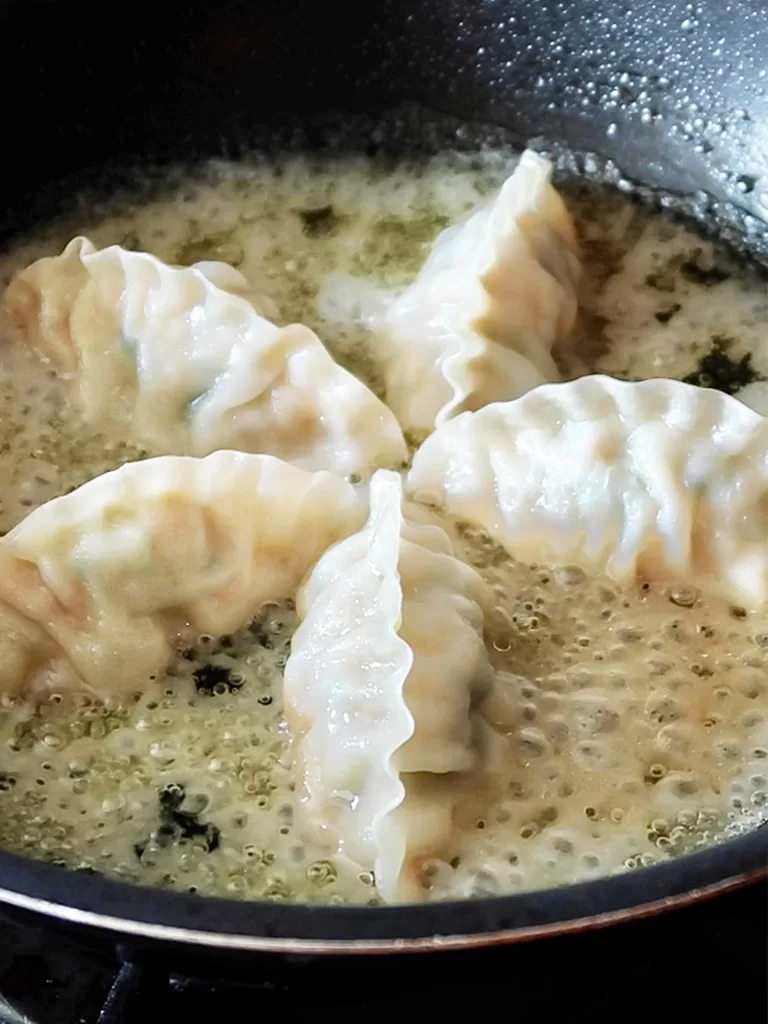

I’m a huge fan of dumplings, and this recipe takes it to the next level with that crispy crunch and the melty mozzarella cheese. The mentaiko adds such a unique flavor—I never knew fish roe could taste this good with cheese! Pan-frying them gives a perfect golden exterior while keeping the inside juicy and flavorful. Totally recommend this if you want something fun, tasty, and a little different from your regular dumplings! 😍